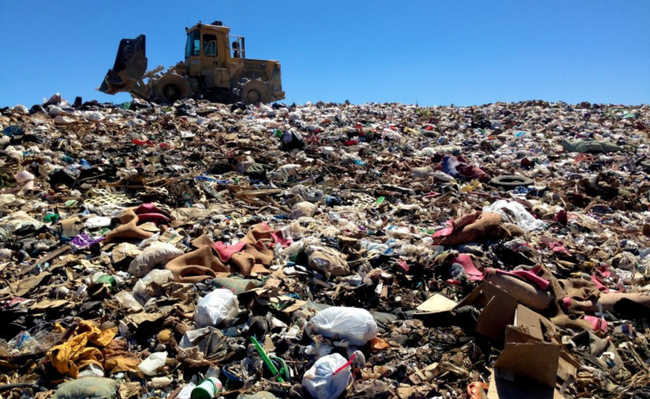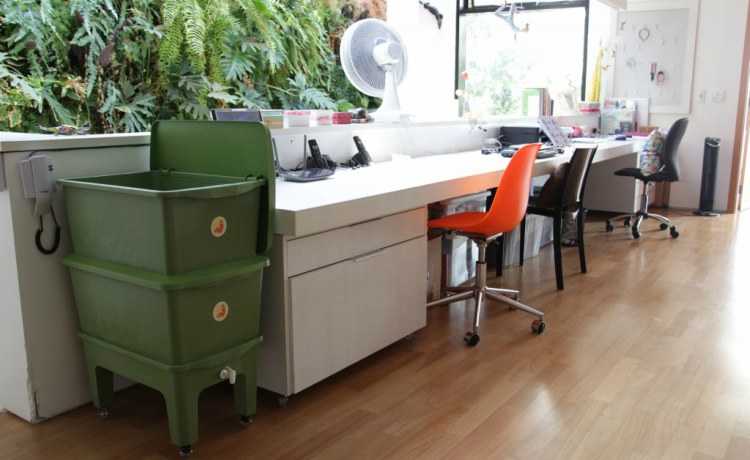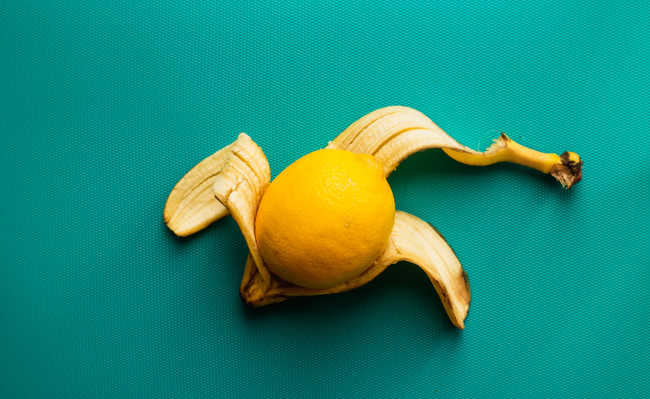13 sustainable attitudes to adopt in 2020
Changes in eating habits are one of the most significant individual ways to have a sustainable attitude

Edited and resized image by Mert Guller, is available on Unsplash
Thinking about actions you can take to be more sustainable is a great way to start the year. Check out some sustainable attitudes that the eCycle portal separated and for you to join this year and keep your conscience in peace. Check out:
1. Have a more sustainable and diversified diet

Menu with less meat is more sustainable, according to FAO. Photo: PEXELS (CC)/Ella Olsson
Extreme weather variations and phenomena are one of the main causes of the increase in hunger in the world, according to the Food and Agriculture Organization of the United Nations (FAO). As the world population grows, food production faces the challenge of feeding more people amidst unpredictable environmental conditions. But it is possible to combat climate change and ensure that everyone has a healthy diet, including through small routine actions.
- Beans: benefits, contraindications and how to do it
Once a week, try eating a 100% vegetarian meal (containing pulses such as lentils, beans, peas and chickpeas) in place of a meat-based meal. More natural resources are needed to produce meat, especially water. Millions of acres of tropical rainforest are also felled and burned to turn land into grazing land for livestock. By diversifying your diet, you can discover “ancestral” cereals, such as quinoa. There are, for example, more than 200 varieties of quinoa, adapted to different types of climate.
This recommendation is even made by renowned researchers from the Lancet. Understand the theme better in the articles: "Veganism is the most effective way to save the planet, say scientific leaders", "The dangers and cruelty of animal confinement" and "Intensive animal husbandry for meat consumption has impacts on the environment and on consumer health".
2. Reduce food waste
Every year, a third of the food produced is wasted. This also means that the resources — such as water, labor, transport — used in production are wasted. When you go to the market, buy only what you need, making a list and establishing recipes and menus in advance to avoid impulsive purchases.
Remember that it is also possible to use leftovers and leftovers, which can be easily thrown away, but can also serve as ingredients for other recipes or be frozen for future consumption. Buy “ugly” fruits and vegetables, which are often wasted because they don't look perfect. Don't be fooled: they taste the same. Check out some articles that can help you with this topic: "18 tips to avoid food waste" and "Food waste: causes and economic and environmental damage".
3. Decrease virtual water demand and make good use of domestic water
Virtual water is that used in industrial processes, which we consume indirectly, when purchasing certain products. It is already known that agricultural activity uses much more water than domestic water consumption. Thus, one way to reduce the demand for water is to reduce the consumption of animal derivatives. However, other forms of production also use water, such as the production of paper, clothing and vegetable foods. Farmers need to learn to use less water to grow their crops. But you can also protect the planet's water resources by reducing food waste. When you throw away your food, you waste the water needed for its production, especially if it is of animal origin. Did you know that it takes 50 liters of water to produce an orange, 7.5 thousand liters to produce a pair of leather shoes and 1.8 thousand liters to produce a pair of jeans? Reducing consumption generally helps to save water. But you can also reduce domestic water consumption and save on your water bill. Discover tips in the articles: "Rainwater harvesting: know the advantages and necessary precautions for using the cistern", "Gray water: how to use reuse water" and "Water uses: types and factors that influence demand".
4. Conserve soil and water

Landfill in Payson, Arizona, United States. Photo: Flickr (CC)/Alan Levine
Some household waste is potentially hazardous and should never be thrown away in a common dump. These are items such as batteries, inks, cell phones, medicines, chemicals, fertilizers, cartridges. They can infiltrate the soil and end up in water supplies, contaminating natural resources that make food production possible. Send your hazardous waste to collection points.
Not to mention plastic — it is estimated that a third of the plastic produced in the world is in the ground and that, by 2050, the oceans will have more plastic than fish. Reduce the use of plastic to keep floors clean. Check out some articles that can help you: "Garbage separation: how to properly separate garbage", "How to reduce plastic waste in the world? Check essential tips" and "Understand the environmental impact of plastic waste on the food chain".
5. Support local producers
Farmers are the hardest hit by climate change. More than ever, they need support. By buying local products, you help family farmers and small businesses where you live. You also contribute to the fight against pollution by reducing the freight distances traveled by trucks and other vehicles. There is even a name for those who are adept in this practice, they are called locávores. Understand the theme better in the articles: "Do you know who the locávores are?" and "CSA Model: Community Supported Agriculture". Food security and climate change are linked. The choices made today are vital to a safer food future.
6. Recycle your organic waste at home!
Composting is the biological process of valuing organic matter, whether urban, domestic, industrial, agricultural or forestry, and can be considered as a type of recycling of organic waste. It is a natural process in which microorganisms, such as fungi and bacteria, are responsible for the degradation of organic matter, transforming it into humus, a material that is very rich in nutrients and fertile. This recycling process reduces the emission of greenhouse gases that would be emitted with the decomposition of waste, in addition to reducing the generation of waste itself (which is transformed into humus). Learn more about this process in the article: "What is composting and how to do it".
7. Support B companies

Edited and resized image of Annie Spratt, is available on Unsplash
A B company is one that has B certification. This category of projects aims at social and environmental development as a business model. System B is a movement that intends to disseminate sustainable and equitable development through the certification of companies globally. Every company in system B aims to solve social and environmental problems. So, why not adhere to certification B (if you have a company) and encourage enterprises with system B? O eCycle portal is one of them. To learn more about this topic, take a look at the article: "Company B: a sustainable business system". To find out how to support the eCycle portal , take a look at the catharsis page.
8. Zero trash

Edited and resized image of Maria Ilves, available on Unsplash
To reduce organic household waste it is necessary to avoid unnecessary consumption and waste - and to practice composting. Likewise, to reduce the amount of other types of waste, such as plastic, the first step is to avoid consumption. Do you really need to use plastic straws? What about disposable cups, plates and cutlery? One option is to carry a food kit with you to avoid disposables when you're out and about.
Prefer less harmful materials. When shopping, prefer glass, paper and cardboard packaging. Be careful with some sauce packaging and long-life items, which, despite appearing to be just cardboard, have thin layers of BOPP, a plastic that makes recycling difficult. Pay attention to the packaging labels and, if you cannot avoid using plastic packaging, look for recyclable packaging.
Replace your plastic toothbrush with a bamboo one. Instead of buying disposable razors, use a metal razor - the product is durable, pays off financially in a very short time of use, and you avoid disposing of products made of plastic and metal, whose separation for recycling hardly takes place.
- Why adhere to stainless steel straw?
- Healthy and sustainable shaving
Give priority to bioplastics. Meet green plastic, PLA plastic and starch plastic. But avoid some biodegradables such as oxo-biodegradable plastics, which do not completely biodegrade and end up causing environmental damage. Learn more about the topic in the article: "Oxo-biodegradable plastic: an environmental problem or solution?"
There are other items that are very common in our daily lives that cause a great environmental impact, such as absorbent pads and disposable diapers. But there are already solutions eco-friendly for these products, such as menstrual collector, cloth absorbent, absorbent panties and cloth and biodegradable diapers.
To avoid the disposables that usually come with street snacks and junk food, how about doing your shopping in bulk and cooking at home, avoiding the generation of so much garbage? Your health also thanks you. Look for stores where you can bring your own containers and cloth bags to buy grains and dried fruits, for example. Also be careful when buying your household items, preferring glass or metal products to plastic items, which can release bisphenol and other endocrine disruptors in your food during preparation and/or storage and then end up in the environment.
If you can't cook, go for a restaurant with real food, served on crockery plates, steel cutlery and glass cups. For quick snacks, bring your own durable utensils. When packing your food, also avoid plastic wrap and plastic bags, which can be replaced with cloth bread bags, reusable pots or options such as a cover similar to plastic wrap, but reusable and made of carnauba wax.
Zero the consumption of cosmetics with synthetic exfoliants, practice upcycle, change the polyurethane dish sponge for the vegetable loofah, practice plogging and, if it is not possible to avoid consumption or reuse, send your waste for recycling. Check the search engine on the eCycle portal which collection points are closest to you.
If you have a company, it's even more important to have a posture eco-friendly with the waste generated by the enterprise. But each company is a case to be analyzed. To find out the best way to start the walk towards zero waste in your company, sign up for the course "Zero waste company learn how to put the zero waste concept into practice and develop and implement the zero waste program in your company or institution". To implement selective collection in your company, take a look at the article: "Instituto Muda: selective collection in companies and condominiums".
He thought it was too much to be eco-friendly with waste? Do not panic! Start with what you can do, little by little.- Garbage separation: how to properly separate garbage
9. Eco-friendly home and business

Image: Address of the Forest/publicity
With the urbanization of cities, more and more, the population has become denser in condominiums, whether vertical (buildings) or horizontal. This makes it seem more difficult to live or work in a place that is eco-friendly . But it is possible to make some changes where you already live. Create stingless bees; reuse water with cisterns, share spaces and goods; practicing composting and implementing selective collection in the condominium or company are some possible practices to be implemented, whether inside your house, company or in the condominium as a whole; in the latter case, after a conversation with the manager and the other residents.
If you live in a one-story house, it is also possible to turn it into a home eco-friendly . Have you ever thought about having a composter, cisterns and solar panels? How about planting bees' food (basil, guava, oregano, sunflower, mint and rosemary) and raising stingless bees?
When a piece of furniture breaks, how about repairing or reusing something that would be discarded for a new function? Pallets are examples of upcycle for furniture that are quite fashionable. In time, who knows, maybe you'll even be using a dry toilet and doing peecycling?
To learn more about these topics and how to get started, take a look at the articles:
- What is compost and how to make it
- Cistern: understand how it works and its benefits
- 13 sustainable ideas for condominiums
- Selective collection in condominiums: how to implement
- Solar energy: what is it, advantages and disadvantages
- Upcycle: what is it and examples
- The importance of bees to life on the planet
- How to plant rosemary?
- Lemon tree: how to plant wherever you live
- Photovoltaic solar installer course
- sustainable architecture in practice
- Organic mini garden: learn small crops such as spices in small spaces in your home or apartment
- Green roofs mini-course: basic technical concepts, covering structural aspects of work preparation
10. Practice slow fashion

Edited and resized image by Mark Kucharski is available on Unsplash
"slow fashion" is an English term meaning "slow fashion". fast fashion - current fashion production system that prioritizes mass manufacturing, globalization, visual appeal, the new, dependency, hiding the environmental impacts of the product life cycle and cost based on cheap labor and materials without take into account social aspects of production.
adopt the slow fashion it's a posture eco-friendly, as this movement values diversity; prioritizes the local over the global; promotes social and environmental awareness; contributes to trust between producers and consumers; it practices real prices that incorporate social and ecological costs; and maintains its production between small and medium scales.
There are several ways to join the slow fashion ranging from adopting the habit of mending clothes; value workers and local cultures; opt for pieces that don't go out of style; consume from thrift stores; support small cooperatives and seamstresses; to give preference to textile fibers with reduced impact, such as organic cotton. To better understand this theme, take a look at the article: "What is slow fashion and why adopt this fashion?".
- Environmental impacts of textile fibers and alternatives
11. Take care of your health and choose the best cosmetics

Edited and resized image of Indian Yogi (Yogi Madhav), is available on Unsplash
the posture eco-friendly extends to any type of consumption, including cosmetics and health-related products. Have you ever stopped to think that self-care is a way to prevent diseases and avoid the consumption of medicines, which are often cruelly tested on animals and which, after consumption, will still cause impacts, such as the generation of waste and superbugs? This is especially true if they are discarded incorrectly.
Self-care can be practiced by reducing the use of cosmetics, cleaning products and harmful habits.In addition to being good for you, it's good for the environment. But when it is not possible to prevent an illness and the use of medication is necessary, remember to make the correct disposal. Find out how in the article: "Disposal of expired medications: how and where to discard".
Learn more about this topic in the articles:
- Substances to avoid in cosmetics and hygiene products
- ten habits to be happier
- What is aromatherapy and what are its benefits?
- Essential Oils: A Complete Guide
- Vegan philosophy: know and ask your questions
- What is Ayurveda?
12. Choose transport with the smallest environmental footprint

Edited and resized image of Ant Rozetsky, is available on Unsplash
It is already known that reducing red meat consumption is more effective against greenhouse gases than stopping driving. However, when one practice (reducing red meat consumption) joins with another (stop driving), the benefits increase.
- What are greenhouse gases
Air pollution is responsible for significant and often irreversible damage, including damage to the environment and human health. It is responsible, for example, for one in seven new cases of diabetes. So why not add more hiking to your daily life? Or even use more public transport, bicycle, rollerblades, skateboards and scooters?
13. Live in mindful mode

Edited and resized image by Sylvie Tittel is available on Unsplash
Is everything you consume really necessary? Every time you buy something, rethink if it's worth it and what you finance when you buy a particular product or service. Did he use labor analogous to slavery? Has it devalued workers in the production chain? Did you include animal cruelty? Deforested? Do any product items generate industrial waste that significantly pollutes the environment? Does the company that profit from the sale of the product worry about offering reverse logistics? Does the company from which you consume practice programmed obsolescence? The less consumption, the smaller the environmental footprint. Conscious consumption is a premise for an attitude eco-friendly . In addition, it is important to extend this idea to the collective, so that the culture eco-friendly , become institutionalized and be a practice accessible to all and not a market niche for a few individuals.










